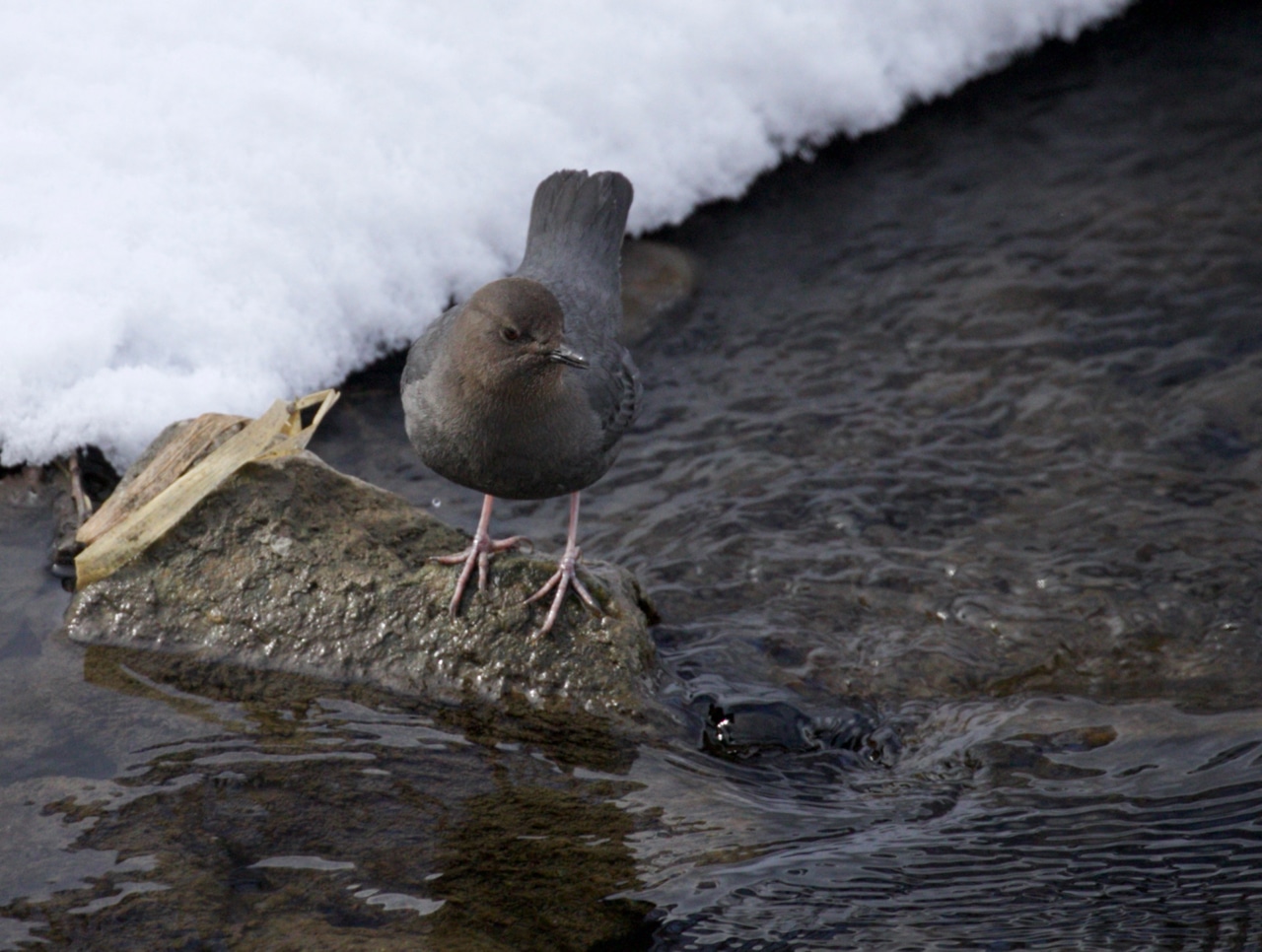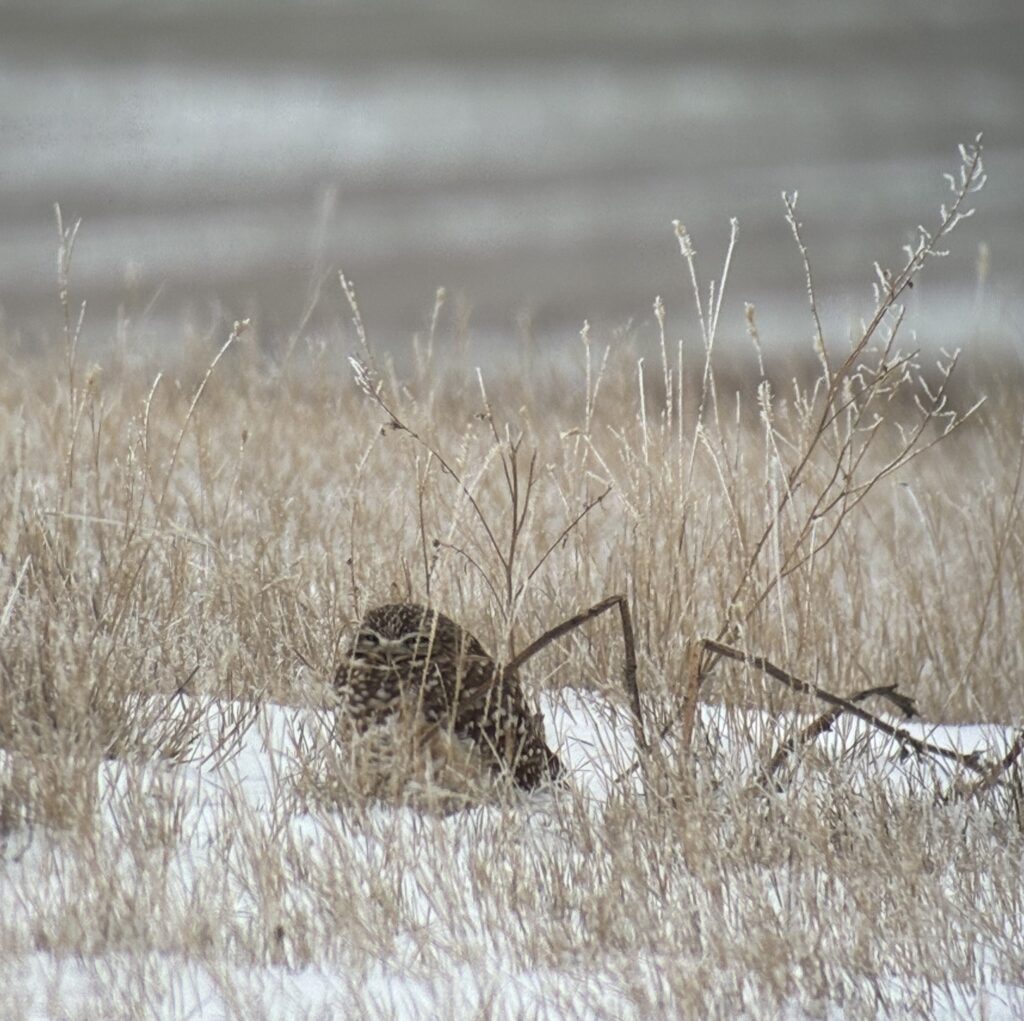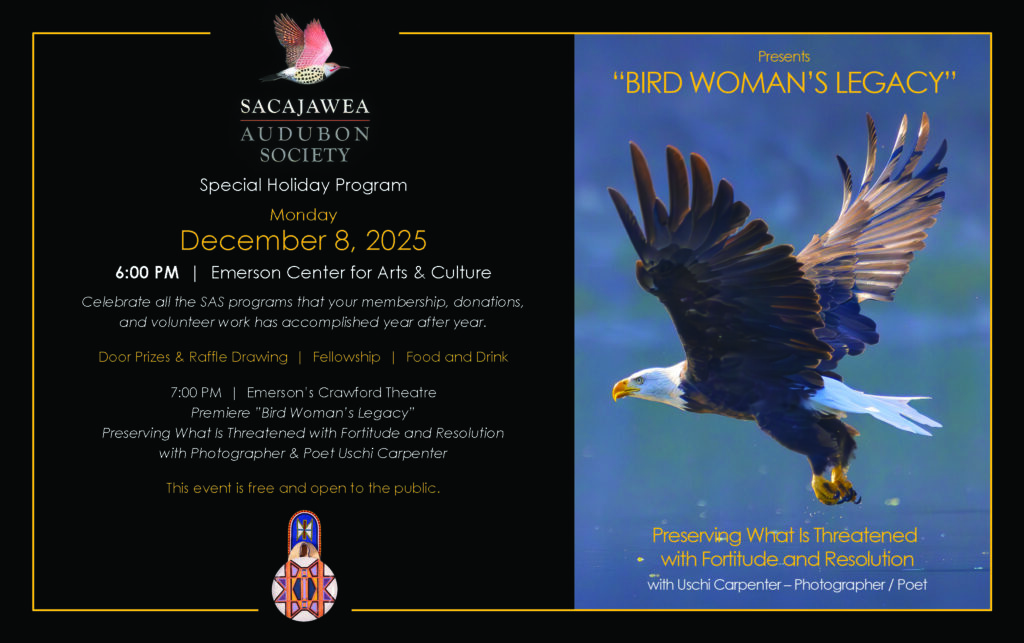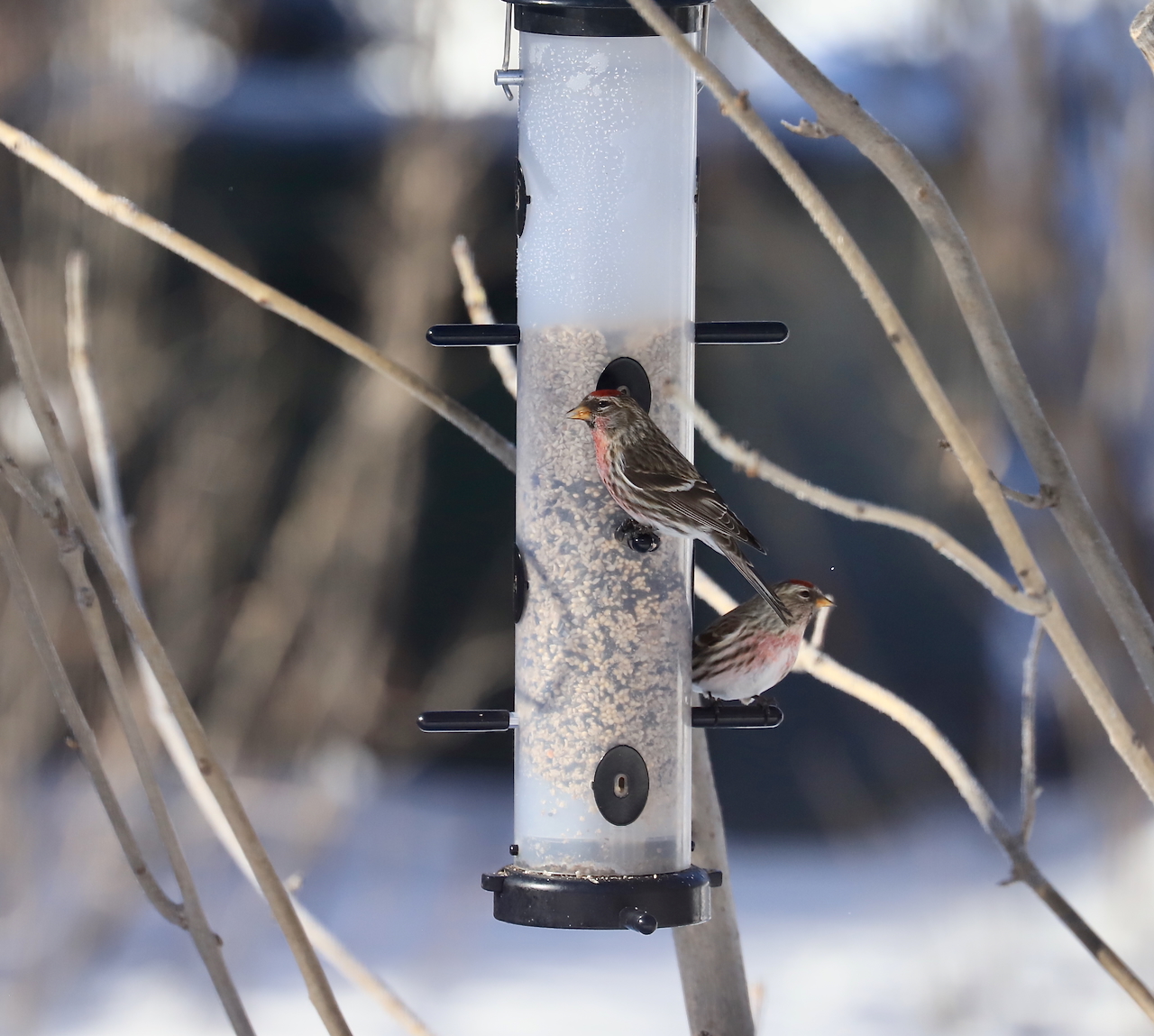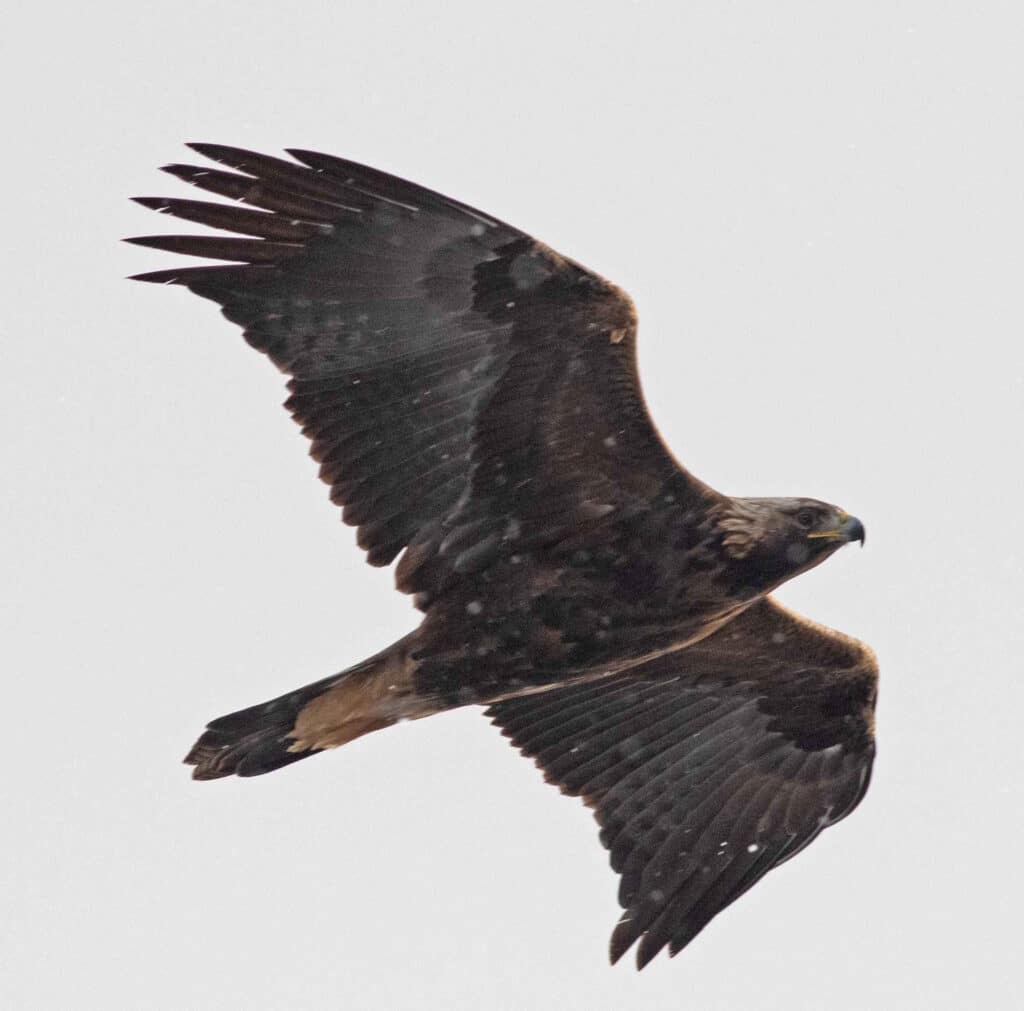The most noteworthy spectacle of the fall was the huge fallout of Trumpeter Swans, Tundra Swans, and especially, Snow Geese across a line from Livingston to Three Forks. Typically, the first major Arctic air mass of the season is the impetus that pushes the birds off of their high Arctic breeding grounds.
In western Montana, this movement can occur anywhere from the third week of October till the fourth week of November, but the period from October 28 to November 10 is when these huge flights are most likely to occur. Most years, the peak flight of waterfowl doesn’t coincide with a storm, and the birds move overhead unnoticed during clear nights. The convergence of weather and the waterfowl migration that can cause these localized fallouts only happens every several years.
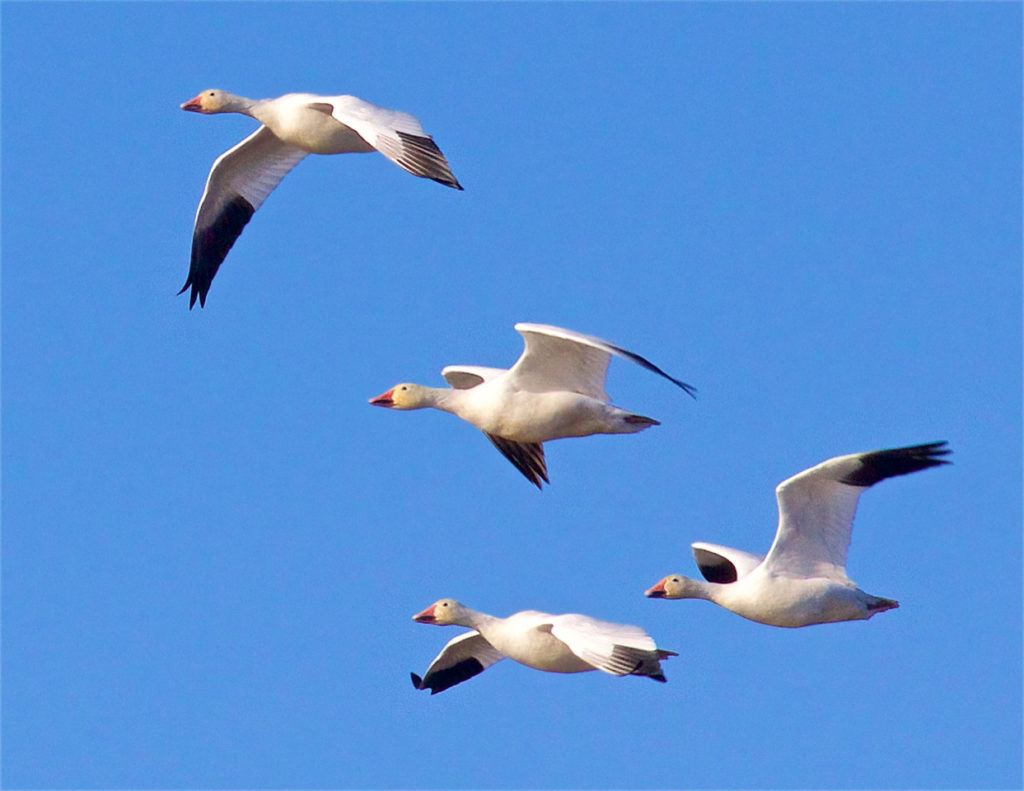
A major winter storm settled into this area as the peak of the swan and goose migration was moving over the area. The peak of this storm and the waterfowl grounding was from November 7- 8, with the geese numbers trailing off over the next two days. Judging by the various reports from around the Gallatin Valley, there were well over 10,000 Snow Geese and hundreds of swans waiting out the storm the night of November 7-8. At our house south of Bozeman, while shoveling out from the storm the morning of the 8th, I counted over 3,000 Snow Geese flying overhead, primarily moving to the southwest.
Along with the post storm morning flight of swans and geese, other high latitude breeding birds such as Lapland Longspurs and Snow Buntings were also on the move flying through the lifting clouds.
This storm event brought several more surprises. The biggest surprise was a female Northern Cardinal, that was first seen November 7th at Joe Stylos’s house in the foothills south of Bozeman. Joe had just put out the feeders, after not feeding for a couple of months due to bear activity. Within minutes the cardinal was at the feeder eating its favorite black oil sunflower seeds. For the next three weeks the cardinal was a regular at the feeder. This is the first record for Northern Cardinal anywhere in the southwestern part of Montana, and only about the seventh record for anywhere in the state.
A Ruby-crowned Kinglet turned up at Reder Daughenbough’s yard south of Bozeman on November 6th. On November 10 a Spotted Towhee was seen by Eric Christopherson and William Burkert along Sixteen Mile Road, in the northern reaches of Gallatin County.
Later in November two Catharus thrushes made late season appearances. While birding at the Sunset Hills Cemetery in Bozeman on November 20th, Lou Ann Harris discovered a Swainson’s Thrush. It’s extremely rare to find a Swainson’s Thrush anywhere in North America after October, and this sighting was the second latest ever for Montana. Hardier than the Swainson’s Thrush, Hermit Thrushes are still a nice bird to find during the winter, so the Hermit Thrush first found along the Sourdough Nature Trail in Bozeman by David Benes on November 25th was notable. The same or another Hermit Thrush was still being seen at the north end of the trail, in Graf Park, till at least December 11th.
I’m not sure you can call it a flurry, but two different Yellow-rumped Warblers were seen in the Gallatin Valley early in December. The first Yellow-rumped Warbler was seen poking around the spruce trees at Andrew Guttenberg’s Belgrade home on December 4th. The second Yellow-rumped Warbler briefly appeared December 6th in Dorrie Green’s west Bozeman yard. I was surprised to learn that these are only the second and third sightings for Yellow-rumped Warbler in this area during December. Locally, there are two late winter records for Yellow-rumped Warbler, both occurring in late February.
Judy Tsiang had a male Lesser Goldfinch visit her south Bozeman feeder on December 6th. Lesser Goldfinch have been expanding their range in Montana during the past decade, but are still infrequently seen in southwestern Montana.
Remember to keep looking for those surprises among your regular feeder birds, because you never know!
– John Parker

